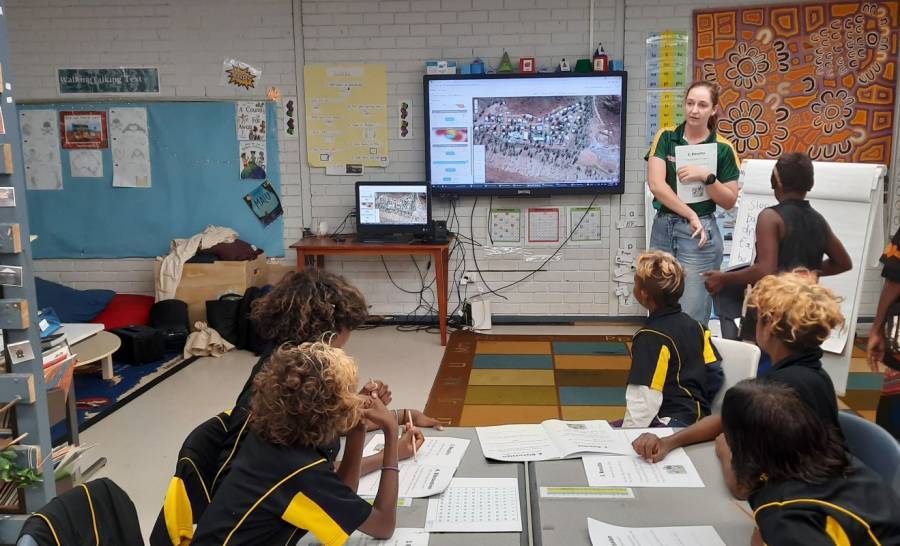
Researchers have been teaching primary school students how to track their pet dogs using GPS tracking devices as part of a new outreach program in remote parts of the Territory.
Charles Darwin University, Inspired NT and Animal Management in Rural and Remote Indigenous Communities (AMRRIC) partnered to deliver a two week education program in remote communities in Central Australia to help them develop a research project tracking their animals through a GPS tracking collar.
To teach students the scientific method, they were asked to design a research study for their pets; developing a hypothesis on where their pets would travel during the day and night and why. Following one week of tracking students were able to analyse the data and were able to view heat maps of where their pets had spent the majority of their time and graphs of speed and distance on the computer.
The students found that the dogs were mostly at home, the shop, or a popular community areas because they wanted food, water, medicine, care, baths, family or play. The study also found some of the remote dogs travelling up to 70kms in a single day.
'The kids were really engaged, and the two parts of the program synced nicely together to reinforce the value of science in everyday life and support the promotion of responsible pet ownership'
Michelle Hayes, AMRRIC Education Officer
The program also taught students in the participating communities about animal empathy, needs and care, as well as a focus on cats in communities.
